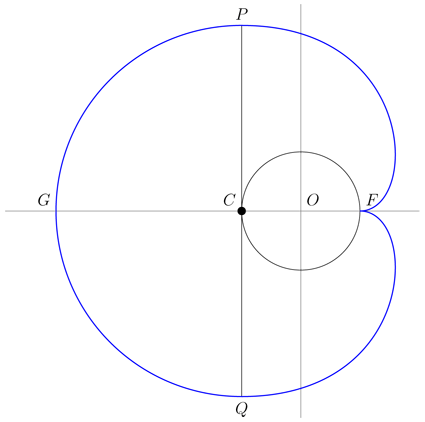Chris L T521
Gold Member
MHB
- 913
- 0
Thanks again to those who participated in last week's POTW! Here's this week's problem!
-----
Background Info: A string is wound around a circle and then unwound while being held taut. The curve traced by the point $P$ at the end of the string is called the involute of the circle. If the circle has radius $r$ and center $O$ and the initial position of $P$ is $(r,0)$, and if the parameter $\theta$ is chosen as seen in Figure 1, then the parametric equations for the involute of the circle are
\[\left\{\begin{aligned} x(\theta) &= r \left(\cos\theta +\theta\sin\theta\right) \\ y(\theta) &= r\left(\sin\theta - \theta\cos\theta\right)\end{aligned}\right.\]
Problem: A cow is tied to a silo with radius $r$ by a rope just long enough to reach the opposite side of the silo. Find the area available for grazing by the cow.
-----
-----
Background Info: A string is wound around a circle and then unwound while being held taut. The curve traced by the point $P$ at the end of the string is called the involute of the circle. If the circle has radius $r$ and center $O$ and the initial position of $P$ is $(r,0)$, and if the parameter $\theta$ is chosen as seen in Figure 1, then the parametric equations for the involute of the circle are
\[\left\{\begin{aligned} x(\theta) &= r \left(\cos\theta +\theta\sin\theta\right) \\ y(\theta) &= r\left(\sin\theta - \theta\cos\theta\right)\end{aligned}\right.\]
Problem: A cow is tied to a silo with radius $r$ by a rope just long enough to reach the opposite side of the silo. Find the area available for grazing by the cow.
-----


